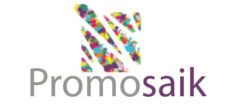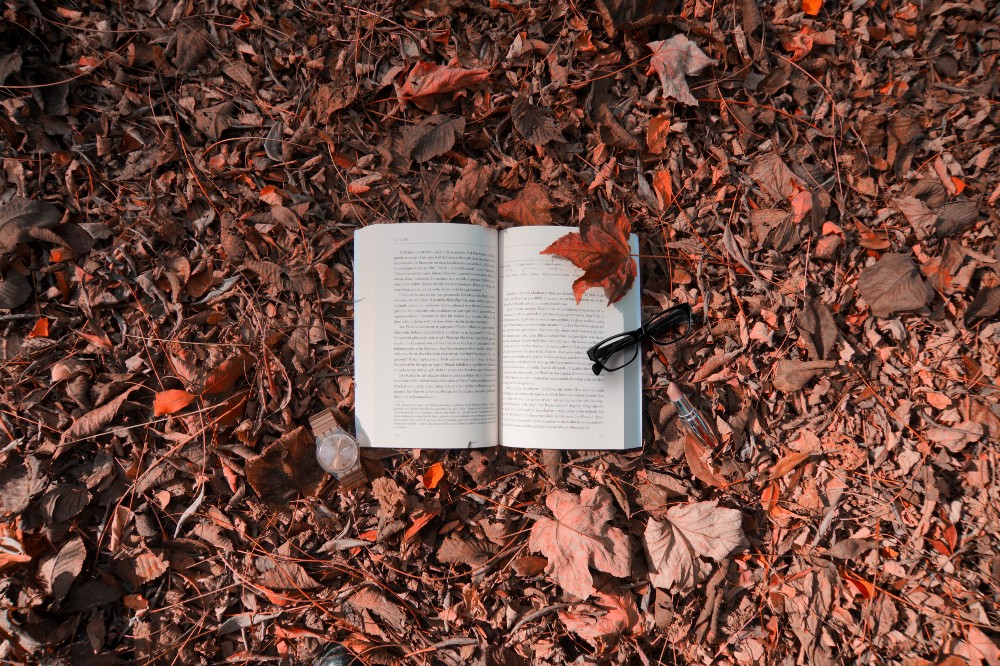I believe that the key ingredients of all great writing are the same.
However, many writers disagree with me.
Novelists often find copywriting soul-destroying and avoid it as much as possible.
But if you want to reach more people — and compel those people to purchase your books — you need to work on your copywriting.
If you don’t, you won’t create a connection with your audience and they’ll be much less likely to purchase anything from you.
The deeper the connection you create with your reader, the easier it is to get them to buy from you.
Here are 10 literary techniques you can use in your copywriting that prove copywriting and fiction (and even poetry!) aren’t so different after all.
Rhyme
Poetry doesn’t have to rhyme. Don’t ever let anyone tell you otherwise.
Rhyme can, however, be useful in both copywriting and fiction. I particularly like to use it in copywriting because most people don’t expect it.
Rhyming creates a pattern, and as humans, we really love patterns (you’ll see what I mean later). Because the words at the end of each line or sentence sound similar, rhyming helps them to stick in our brains, too.
What’s important when creating a rhyme is to make it sound effortless. The more forced your rhyme sounds, the less comfortable it will make your reader.
However, forced rhyme is something that can also be used to creative effect if done properly. For instance, you could use a forced rhyme to show how difficult something is.
Beware of using obvious rhymes, like ‘you’ and ‘blue’ or ‘do’, though. These are predictable and will mean that your rhyme is less unique to you and what you do (ahem).
Much like with all rules, it’s better to understand them fully before you subvert and break them.
Iambic pentameter
Don’t skip this one. It’s not as complicated as it sounds, I promise.
Trouble is, when we’re taught poetry in schools, 90% of the time we’re taught it by a) someone who doesn’t understand poetry themselves, or b) someone that doesn’t like poetry themselves. They usually teach it using poems written by old guys nobody cares about any more too, which further causes us to switch off. (If it were up to me, we’d all be taught poetry using Philip Larkin’s ‘This Be the Verse’. I doubt you’ll find a teenager who couldn’t connect with that.)
Iambic pentameter isn’t exactly an accessible name, either.
But it’s used more than you think.
So what is it?
Iambic petameter is a type of poetic metre. You may not realise that you know it, but you do.
Iambic pentameter always stresses the even-numbered syllable, like this: da-DUM, da-DUM, da-DUM, da-DUM, da-DUM.
Everything from Shakespeare to Philip Larkin poems uses iambic pentameter.
Take this (I know, it’s a Shakespeare quote, but stay with me here):
But, soft! what light through yonder window breaks?
Think about how this line is often read out:
But, SOFT! what LIGHT through YONder WINdow BREAKS?
The emphasis is on the second syllable, and we often put that emphasis on the second syllable without even realising it.
Rule of Three
The number three makes the world go ’round.
Why?
Because of our aforementioned love of patterns. Three is the smallest number that can form a pattern.
Think about how you read out your phone number. I’ll bet it’s in groups of twos and threes, isn’t it?
Even subconsciously, you’ve been using the Rule of Three for years.
The Rule of Three works when it comes to grouping words or phrases into threes, as well as repeating words or phrases three times (this part ties in with anaphora, which you can read more about below). They don’t have to be repeated right next to each other; they could be used to start back-to-back sentences, too.
The first time I came across the Rule of Three was when Tony Blair used it in a (now famous) speech. He said: ‘Education, education, education.’ I didn’t watch the speech at the time (I was too young to care), but a schoolteacher of mine used it as an example of the Rule of Three when I was at high school, and it’s stuck with me ever since.
There are loads of examples of the Rule of Three in the world. Once you’re aware of it, you’ll see it EVERYWHERE…including on this blog, as I use it a lot myself ?
Anaphora and epiphora
Anaphora is when you repeat a word or phrase at the start of several clauses or sentences. Doing so reinforces a message or idea, further embedding it into your audience’s mind.
I used it in my poetry all the time when I was a teenager, without any idea it was a proven literary device with a fancy name.
Even if you haven’t read A Tale of Two Cities, you’ll be familiar with this opening:
It was the best of times, it was the worst of times, it was the age of wisdom, it was the age of foolishness, it was the epoch of belief, it was the epoch of incredulity, it was the season of Light, it was the season of Darkness, it was the spring of hope, it was the winter of despair…
What makes it so memorable?
Anaphora.
Repeating a word or phrase at the end of a clause, meanwhile, is called an epiphora. And it’s just as effective.
Using the two together is called symploce.
Analogy and metaphors
An analogy is when you use an image of something to describe something else. An analogy can be a simile, but it doesn’t have to be.
This line from the Brothers Grimm is a perfect example of an analogy (using similes):
Skin white as snow, lips red as blood, and hair black as ebony.
Metaphors are when you say something is something else.
So for example, when Biff calls Marty a chicken in Back to the Future, that doesn’t mean Biff expects Marty to start clucking. He’s comparing Marty’s behaviour to that of a chicken to show how cowardly he is.
Simple language
Too many people think that they need to use big words to convey big ideas. If you’re one of these people, STOP DOING THAT.
‘While trying to look intelligent a lot of people do things that make them look dumb,’ says Wall Street Journal’s Sue Shellenbarger. I couldn’t have said it better myself.
All you do when you use big, fancy words, is confuse most of your audience. Look at Russell Brand’s or Sean Penn’s writing if you want to see what I mean (or better yet, save yourself and don’t).
When you convey your messsage in simple language, you appeal to a wider audience.
You also segment the right and wrong people for you faster because who you are and what you do is much clearer.
Short words
‘Short words are best,’ said Winston Churchill. And if it works for Churchill, it’s good enough for me.
Most of the short words in the English language come from the very early days of English. That means they connect to our inner cave people (ok, maybe not that far back).
Their simplicity means we’re more likely to understand them and take on their meaning. The less internal processing we have to do, the happier we are and the more likely we are to take action.
Humour
Make it dark, make it grim, make it tough, but then, for the love of God, tell a joke.
— Joss Whedon
Humour is an effective way to connect with people. Cracking a joke when someone least expects it helps to subvert their expectations and make your writing more memorable.
Always make sure your humour is appropriate for your audience, though.
The reason Christmas cracker jokes are so bad is because people can bond over how terrible they are. It’s much easier to spot a bad joke than a good one. (If you want to try the bad joke thing for yourself, go for it, but be wary.)
Puns are a lighter way to embrace humour without risking isolating anyone. One of my ex-colleagues was a big fan of puns. One that’s always stuck with me is ‘tree-mendous’, used in a press release about new trees being planted in the local area.
Imagery
If you’ve studied writing even the tiniest bit, you’ll have heard someone say, ‘Show, don’t tell.’ Imagery is what helps you to do this.
A great writer creates a picture with words. They use your mind as the canvas, and as the narrative goes on, they draw. The best images stick with you, permanently seared into your mind.
Many (bad) copywriters think that if they relay the facts to their audience, then their work is done.
If you really want to touch your audience, use your facts to reinforce images instead. This creates more of an emotional connection and makes them more likely to respond/take action.
Storytelling
And finally, the most important element of all great writing: storytelling.
It’s telling a story that will create an emotional connection with your audience first and foremost.
All of the other elements in this list come together to make your story more powerful. How you tell your story matters just as much as what your story is. How you tell your story is what will make it unique and memorable to your readers, whatever you’re writing.
Want more writing wisdom?
Writing Ingredients is my weekly email that shares advice and techniques you can adapt to supercharge your writing.
It covers every step of the writing process, meaning that whether you’re still in the planning stages or you’re about to press publish, there’s something in it for you.
Find out more at www.writerscookbook.com.
Over to You
What are your favourite copywriting tips?

